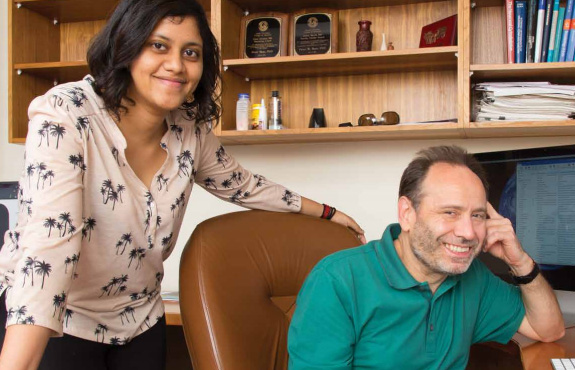Research Topic
Degeneration, dysfunction, injury and repair of the nervous system
Mission Statement
The Baas Laboratory focuses on the underlying mechanisms of neurodegeneration and dysfunction of the nervous system, resulting from degenerative diseases, developmental disorders and injury, with the goal of developing therapies for prevention, treatment and repair. Rather than focusing on just one type of disease, disorder or injury, we focus on a common downstream target that goes awry across almost all of them. By focusing downstream, we can gain mechanistic insights and develop therapies that can broadly apply across maladies. This enables each lab member to have a distinctive project while keeping everyone on a unified mission. Specifically, the downstream target we study is the microtubule – a cytoskeletal structure that is critically important for all aspects of the architecture, intracellular transport and mobility of neurons and other cells of the nervous system.
Research
Project 1. Neurodevelopmental Disorders
As neurons develop from mitotic precursors, they undergo a migratory journey to their final locations in the brain or elsewhere in the body. Axons develop with growth cones heralding their journey to their targets, and dendrites form as well. Both axons and dendrites undergo extensive branching, pruning and remodeling. All of these events are microtubule-based, with the relevant proteins and pathways vulnerable to disorders such as autism. For over 30 years, we have worked to elucidate the mechanisms, proteins and pathways of neurodevelopment to enable us to have unique insights into such neurodevelopmental disorders that we are now studying.
Project 2. Hereditary Spastic Paraplegia
Hereditary spastic paraplegia (HSP) is (usually) an adult-onset disease that most often arises due to autosomal dominant mutations of the SPAST gene, which encodes for a microtubule-severing protein called spastin. The patients have a pronounced gait deficiency and eventually become confined to a wheelchair, due to corticospinal degeneration. Our focus on microtubules has provided us unique insights into the etiology of the disease, which we are studying with various experimental models. In the past we have used cultured rodent neurons and Drosophila, but now we are using a mouse model for HSP that we have developed that displays the hallmark characteristics of the disease. We are conducting behavioral, anatomical and histochemical studies, pursuing molecular mechanisms, and are now poised to begin testing therapies. We also have developed human induced pluripotent cell lines (hiPSC) from patients with the disease, which we are differentiating into neurons, for further analyses of mechanisms and potential therapies.
Project 3. Disease of Tau
Tau is a microtubule-associated protein that goes awry in Alzheimer’s disease, coming off the microtubules to form neurofibrillary tangles. Many other diseases also involve abnormalities to tau including frontotemporal dementia, supranuclear palsy, and Parkinson’s disease, as well as injuries such as traumatic brain injury. Most researchers in the field believe that microtubules become destabilized in tau diseases, but our hypothesis is different – we posit that tau is important for keeping much of the microtubule content of the axon labile and dynamic and that tau diseases cause the loss of the labile/dynamic component of the microtubule array. We also posit that microtubules become disorganized in the axon as a result of toxic properties of the abnormal tau. We are using mouse models and hiPSC lines from human patients to test our hypotheses and pursue novel therapies.
Read about our work:
Project 4. Gulf War Illness
A substantial portion of the veterans who served in the 1991 Gulf War suffer from a disease called Gulf War illness (GWI). The symptoms are mainly of the CNS (central nervous system), including memory deficits, sleep disorders, headache and fatigue. Our lab is part of the Gulf War Illness Consortium, a group of researchers and physicians from around the country who work collaboratively to understand the etiology of this mysterious disease and develop therapies. The disease seems to have arisen from a combination of stress of the battlefield together with various toxicants such as the neurotoxin sarin as well as pesticides. We are using rodent models and hiPSC lines (that we developed) in 2-dimensional culture and 3-dimensional cerebral organoids to test our hypothesis that microtubule abnormalities underlie the neurodegeneration and develop novel therapies accordingly.
Read about our work:
Project 5. Spinal Cord Injury
Our laboratory is part of the Marion Murray Spinal Cord Research Center, which is a multidisciplinary group of labs at Drexel University aimed at developing novel approaches for improving the lives of people suffering from spinal cord injuries (SCI). Mostly in collaboration with our partner labs, we are striving to use our knowledge of microtubule-based pathways to prompt injured nerves in the spinal cord to regenerate in ways that lead to functional recovery.
Mentoring
“Unbeknownst to her, Hemalatha Muralidharan (who recently completed her PhD work with Dr. Baas) was listening to her future mentor when she heard Peter Baas, PhD, speak at a conference she attended as an undergraduate in Mumbai, India. The topic, and his way of talking about it, piqued her interest. Years later, when Hema came to the College of Medicine to pursue her PhD in the Graduate School of Biomedical Sciences and Professional Studies, she visited the Baas Lab and found both a home for her research and a mentor who inspired her.”

News and Announcements
The Chemicals They Carry
Thousands of U.S. soldiers returned from the 1991 Persian Gulf War with a mysterious, incurable illness. To find answers, College of Medicine researchers are reprogramming veterans' cells. EXEL, Drexel University Research Magazine (2018)
Study Finds Tau Protein Does Not Stabilize Microtubules, Challenges Approach to Treating Alzheimer's
DrexelNow (June 28, 2018)